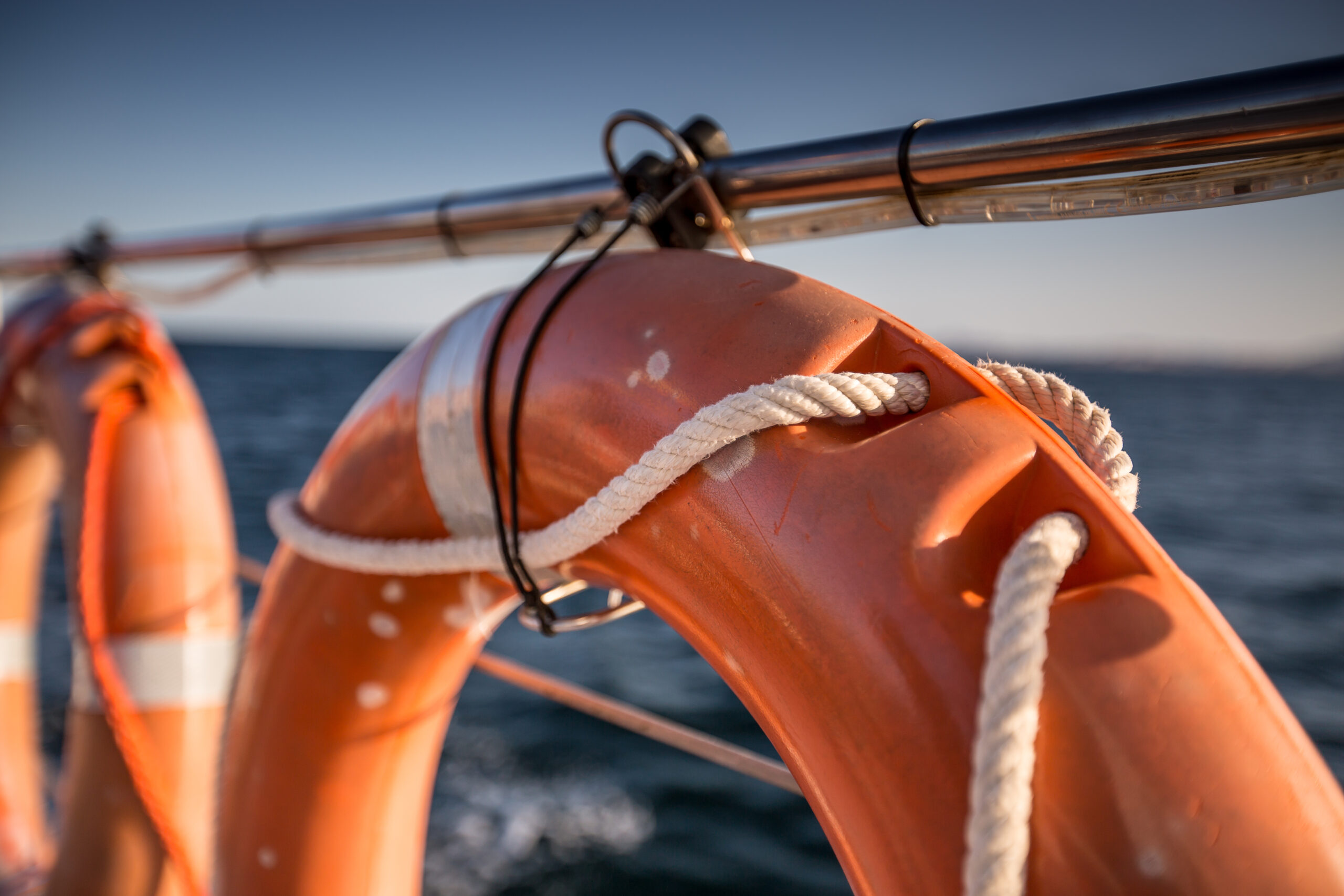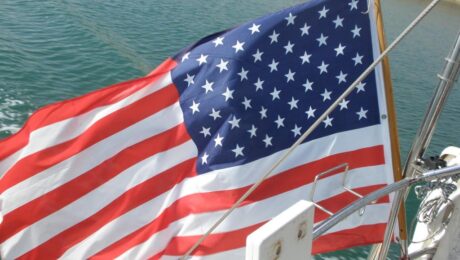Spending time on the water is one of the best ways to beat the summer heat. To ensure everyone makes it back to the dock safely, let’s build a practice of anticipating and avoiding risks. To help give you some peace of mind, consider boat insurance coverage from Ahoy!
In 2021, the U.S. Coast Guard reported 5,265 boating accidents resulting in 658 fatalities.
Read on for how to avoid common boating accidents.
Take a boating safety course
Most states require boat operators to obtain a boating safety certificate. Most courses are available through the US Coast Guard, your local Power Squadron, or in some states through the Parks & Recreation departments. Check out your state’s requirements here.
Good resource for safety courses is the American Sailing Association.
At Ahoy! we value safety and completion of safety courses may provide a more favorable boat insurance quote.
Creating a safety-oriented boat
One way to ensure your boat is ready for the season is the free Vessel Safety Check provided by U.S. Coast Guard Auxiliary and U.S. Power Squadron volunteers. These experts will check for minimum safety standards and equipment to save lives and signal for help in an emergency.
After covering these requirements, consider the specifics of your vessel. Walk bow to stern looking for hazards. Those with inboard engines should check for proper machinery space and ventilation, especially for gasoline engines. The propeller can be another source of danger for inboard or outboard engines. Be careful of lines going overboard and fouling the prop - this could result in losing power and/or steerage. If swimmers are in the water, the engine should be in neutral or off.
Safety supplies like lifejackets and fire extinguishers should be stowed prominently in your vessel. The US Coast Guard recently updated the rules regarding the number of fire extinguishers to be carried on a vessel according to its size - make sure to familiarize yourself with the new rules and equip your vessel accordingly.
It can be tempting to bury these in a cabinet or lazarette to free up space for towels and coolers. If an emergency strikes, you will be glad to have these at the ready.
Planning a day on the water
Take a look at the weather - when life gets busy, it’s tempting to pick a day on the calendar and schedule your time on the water. Dangerous storm conditions are no time to be on the water, but a little research ahead of time can avoid rough sea states, heavy wind, and thunderstorms.
Provide a float plan - whether you are taking a simple spin around the lake or crossing a large body of water, it’s a good idea to share details with an on-shore contact. Let them know your estimated time of return and what action to take if you are overdue. These instructions could be a simple text message or follow this template from the US Coast Guard. Read more about float plans in our article: “What is a float plan and how to I create one?”
Before you leave the dock
Be sure to have all of your safety supplies on board and easily accessible. The US Coast Guard requirements are a great place to start, and you may consider adding additional safety items tailored to your crew and vessel. See below for a basic overview and read full USCG safety requirements here.
Following is a handy quick checklist:
- One personal floatation device per passenger
- Throwable floatation devices
- Visual distress signals, like flags and flares
- Sound blasting distress signals, like air horns and whistles
- Fire extinguishers
- First aid kit, including any specific medical supplies
- Communications device, such as VHF radio, cell phone, or satellite phone
Some additional items to consider bringing along:
- A basic tool box containing: a few different types and sizes of screwdrivers, pliers, needle nose pliers, a hammer, a wrench
- Extra line inventory
- Plenty of water and snacks
- Sun protection
- Towels or rags to wipe down wet surfaces - to prevent passengers from slipping
Building a culture of safety amongst the crew
Once everyone has gathered and before casting off the dock lines, lead a safety talk. This overview should include the location of equipment, any maneuvers that may be required of your crew, and expectations for conduct onboard.
In 2021, alcohol was the leading known contributing factor in 16% of boating incidents. While drinking while underway is not illegal, it does impair judgment and reaction times. At the least, identify a designated driver and be aware that other vessels may be driven under the influence.
81% of boating fatalities were the result of drowning, and of those 83% were not wearing a lifejacket. Remember, the US Coast Guard requires a life jacket for each passenger on board, and that children under 13 are required to wear life jackets all the time. Set an example by wearing your lifejacket and at the least, have jackets easily accessible.
Man-overboard drills are a fun way to uplevel skills and bring the crew together. Toss a buoy or other flotation overboard and work together to recover it. Instruct one person to keep a finger pointed at the object in the water. Instruct others to grab a boat hook and prepare to grab the buoy as the boat comes about.
Coverage designed by boaters like you, just in case
At Ahoy! we combined our passion for boating with our knowledge of insurance and technology to design the most comprehensive, innovative insurance solutions on the market. Our “First Mate” concierge service offers non-intrusive assistance when you need it most, and our mobile app offers support to help prevent risk. Ahoy!'s insurance policies are currently available directly and through agents, to boat owners in a growing number of states, offering nautical insurance coverage in Calfornia, Minnesota, Nevada, Utah, Arizona, Illinois, Ohio, New York, Michigan, Wisconsin, Indiana, Tennessee, South Carolina, North Carolina, and Georgia with plans to expand across the US in the coming months. Ahoy! insurance covers a variety of boats, with boat insurance available for Cabin Cruisers, Bass Boats, Yachts, Sailboats, Powerboats, Pontoon Boats and more!


